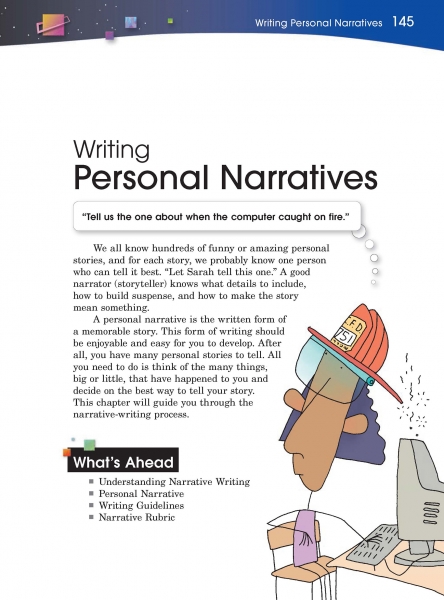Page 145 from

Start-Up Activity
Ask your students, “What’s the funniest thing that happened to you this week?” Have some students volunteer their stories. Encourage sharing and laughter. Then ask your students why we enjoy telling stories about our lives and listening to stories about other people’s lives. Lead a discussion of the fun—and power—of stories.
Let your students know that they will be writing stories about funny, strange, surprising, or interesting experiences that they have had.
Think About It
“Heirlooms we don't have in our family. But stories we’ve got.”
—Rose Cherin

Start-Up Activity
Ask your students, “What’s the funniest thing that happened to you this week?” Have some students volunteer their stories. Encourage sharing and laughter. Then ask your students why we enjoy telling stories about our lives and listening to stories about other people’s lives. Lead a discussion of the fun—and power—of stories.
Let your students know that they will be writing stories about funny, strange, surprising, or interesting experiences that they have had.
Think About It
“Heirlooms we don't have in our family. But stories we’ve got.”
—Rose Cherin




